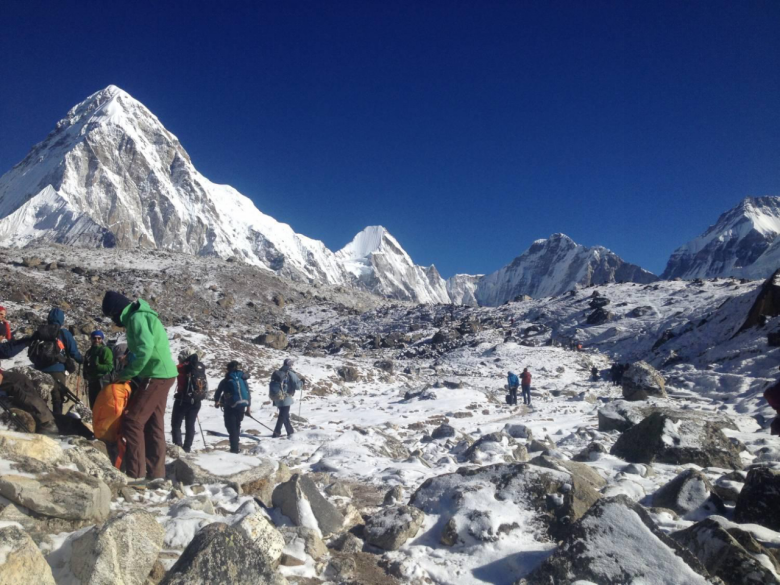The higher you move from the sea level, the less air pressure. The air pressure results in less saturation of oxygen in the air. Mount Everest lies on the highest point on Earth. So, naturally has very less oxygen saturation. The practice of climbing supplemental oxygen is crucial to the Everest expedition. Even Trekking Everest Base Camp might require supplemental oxygen. There have been more than 4000 people who have ascended Everest. But less than 200 have done it without supplemental oxygen.
You must remember that people were not made to live in high altitudes. Amazingly, however, the body does have a few adaptations to the rarefied air. Some of the mechanisms have initially unfavorable side effects. But other changes quickly balance them out.
Acclimatization, hydration, rehydration, avoiding caffeine, etc., are natural ways of mitigating such dangers. But the death zones of Everest can not be won over by natural methods. These tools could mitigate symptoms of AMS and HACE. But the worst form of altitude sickness, HAPE, and hypoxia, need more than traditional tools.
Dangers of oxygen deficiency
Low oxygen levels in your body tissues are known as hypoxia. It results in symptoms like bluish skin, confusion, restlessness, difficulty breathing, and a rapid heartbeat. You may be at risk for hypoxia if you have one of many chronic heart and lung conditions. Hypoxia poses a serious risk to life. It has progressive effects on the functioning of the central nervous system.
Accidents that occur at extreme altitudes on Everest could be due to hypoxia. Hypoxia results in damage to cerebral function resulting in poor judgment and depression. There are other occurrences that also contribute to accidents. Those factors could have separate tools for mitigation. But a hypoxic situation needs special care like supplemental oxygen.
Supplemental oxygen can be used to lessen the effects of severe hypoxia at extremely high altitudes. Having said that, a sensible acclimatization schedule must be used in addition to it.
Usage of supplemental oxygen in Everest
Rarely has Everest been scaled without using oxygen. On an 8,000-meter peak, most climbers use bottled oxygen above 7,000 meters. However, because it is large and costly, flow rates are kept low. A face mask is typically used to deliver a flow rate of 0.5 to 1 liter per minute while you sleep. This increases to 2 to 3 liters per minute when climbing above 8,000 meters.
For a 3 to 4-liter bottle, a cylinder typically weighs between 2.5 and 3.5 kg. They may be able to supply oxygen for as long as 15 hours, depending on the flow rate.
Usually, an oxygen regulator provides a constant flow of oxygen. Therefore, it is crucial to adjust your pace to the flow rate and vice versa. A regulator regulates the constant flow of oxygen delivered to the mask.
The constant flow of oxygen is diverted to an accumulator as the climber exhales. The accumulated oxygen is delivered when inhaling, going deep into the lungs. Up until the accumulator empties, the first portion of the breath is the rich oxygen mixture. The anatomical dead space is then fully filled with ambient air after a secondary valve opens. It is a pipe that supplies the deep lung, which cannot exchange oxygen.

